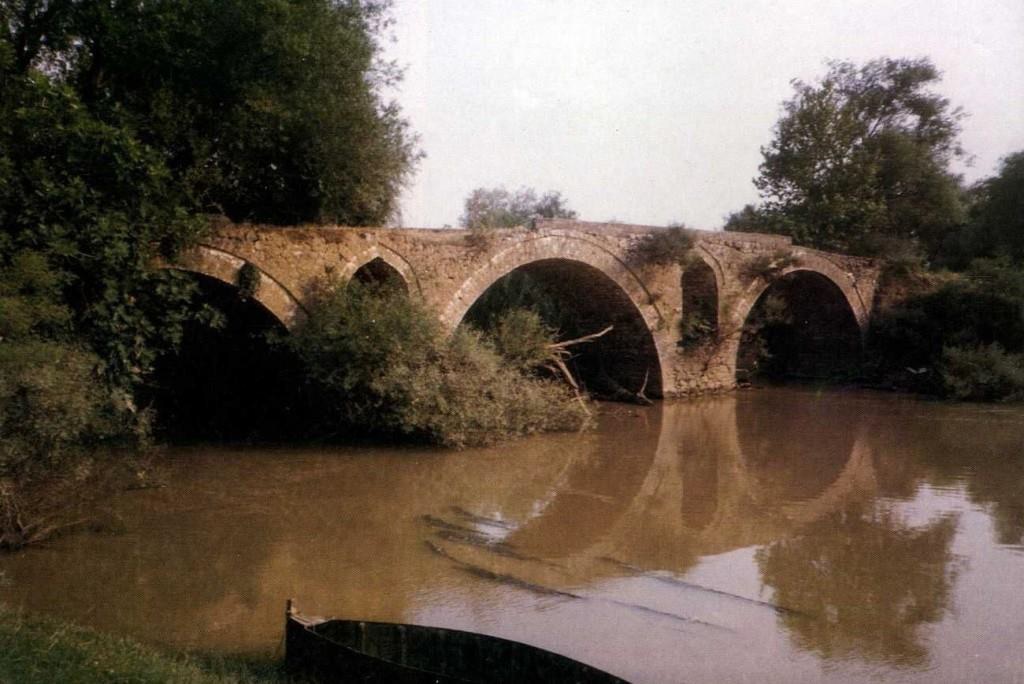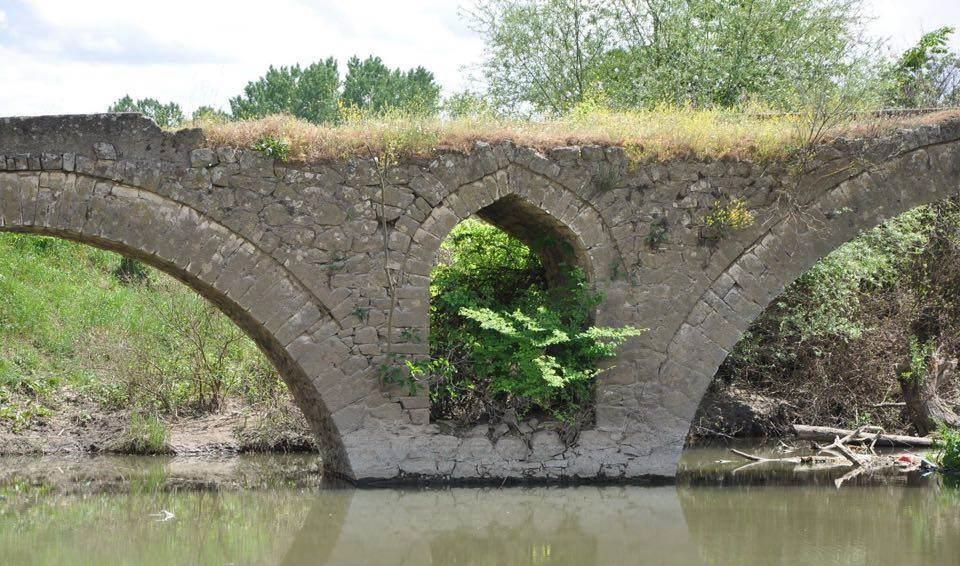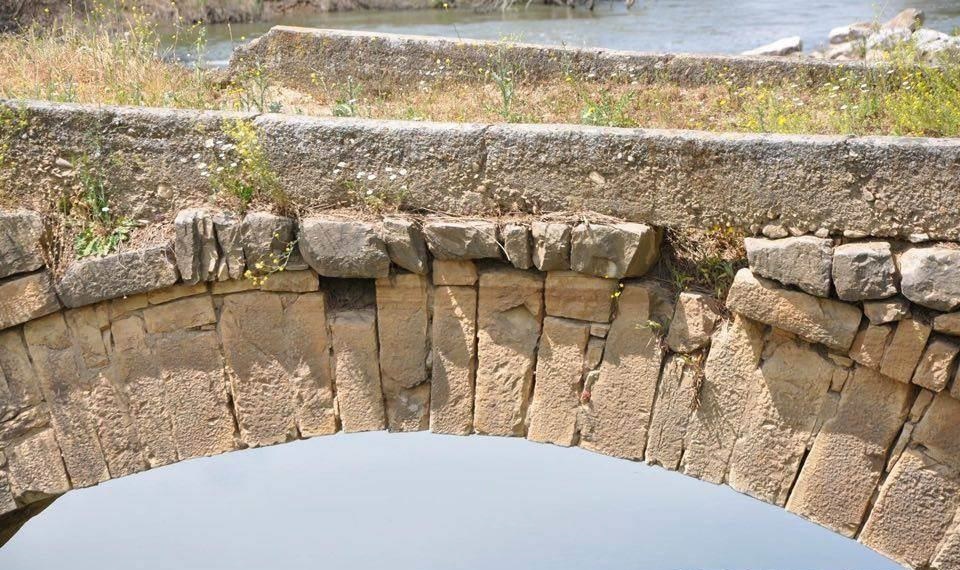It is located at the exit of Keramidi village, towards the South, and is also called “Paliogefyro”. It bridges the river Enipeas – after the confluence of Farsalitis – and served the connection with Karditsa and Larissa. It is not known when it was made. Probably between the 13th and 16th centuries. Its dating is evidenced by the sharp-pointed locks of its relief openings. It was built during the Turkish occupation and is one of the remaining in Thessaly.
Architecture
Originally it had 4 arches. Today there are 3 remaining, after the Germans blew up the largest left arch in 1941. The arches – Eastern style – are semi-circular with two relief openings on the pedestals. The right pedestal rests on rock while the others were founded on soil.
The largest arch is the middle one, with a span of 8.6 m and a height of 6.2 m. The other two have a span of 7.2 m and a height of 5.9 m. The spans are 0.60 m thick. The main and 0.20 m the secondary. The relief openings – with pointed locks – are 1.80 m wide and 2.80 m high. Their spans are 0.35 m thick in the main and 0.10 in the secondary. Its overall length is 40 m and the width of the deck is 3.4 m. The parapet is 0.50 m high and 0.30 m wide. The pedestals are 3 m wide and have triangular cantilevers of 1 m opposite.
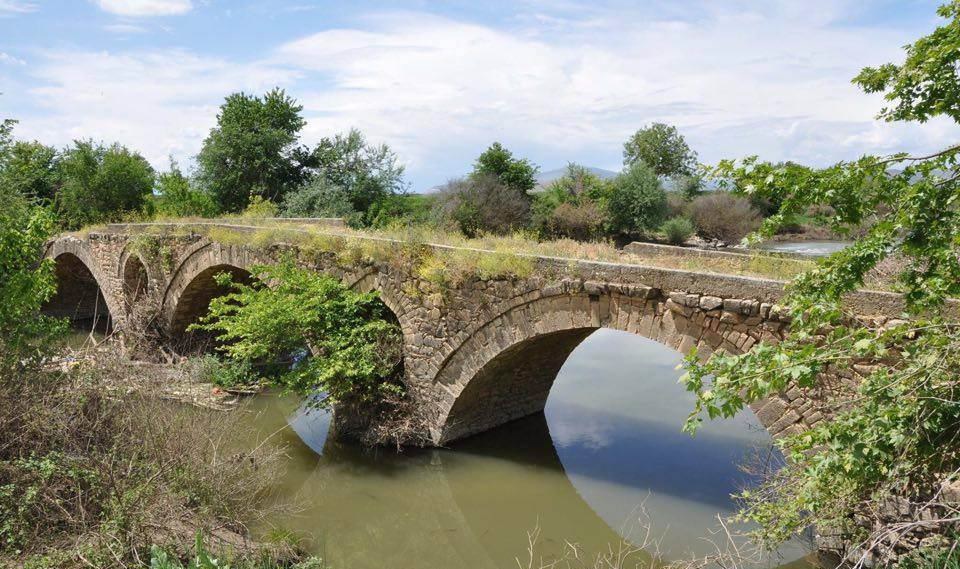

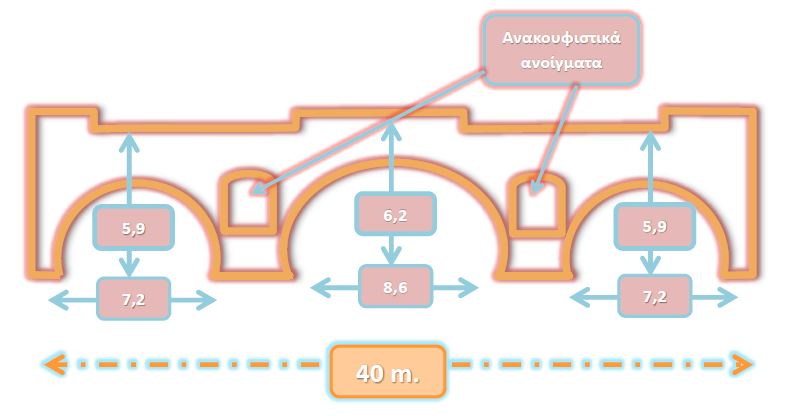
Construction materials
The material for the construction of the bridge has been taken from the neighboring hills which are limestone (arches of hewn stones, drums of carefully constructed mudstone.
Static state
The bridge is in very good condition. Although now decommissioned, it is easily accessible from the country road leading to Palamas. Flanked by the modern highway with its concrete link, the Keramidi bridge no longer leads anywhere. But it stands solidly and majestically at the end of the dirt road surrounded by the smells of the earth and the sounds of nature, a picturesque masterpiece in perfect harmony of colors and materials with its surroundings
Historical value
By decision of the Ministry of Culture, the bridge has been declared a preserved monument since 1987. Characterization as a historical preserved monument of the “Paliogephyro” bridge near the village of Keramidi Trikala.
“We are classifying the old bridge, known as “paliogefyro”, near the village of Keramidi Trikala, as a historical preserved monument, in accordance with the provisions of N1469/50, because it is one of the most valuable and representative samples of its kind in the plain of Thessaly, is structurally sound and has remarkable details, necessary for the study of the evolution of architecture in this area. It consists of three large arches which rest on the banks of the river and two large square pedestals, founded on its bed. To deal with floods, smaller pointed arched openings have been built inside the pedestals that also act as reliefs. Its deck is curved, cobbled.
The bridge is also a point of reference and is connected to the memories of the residents of the area”.

